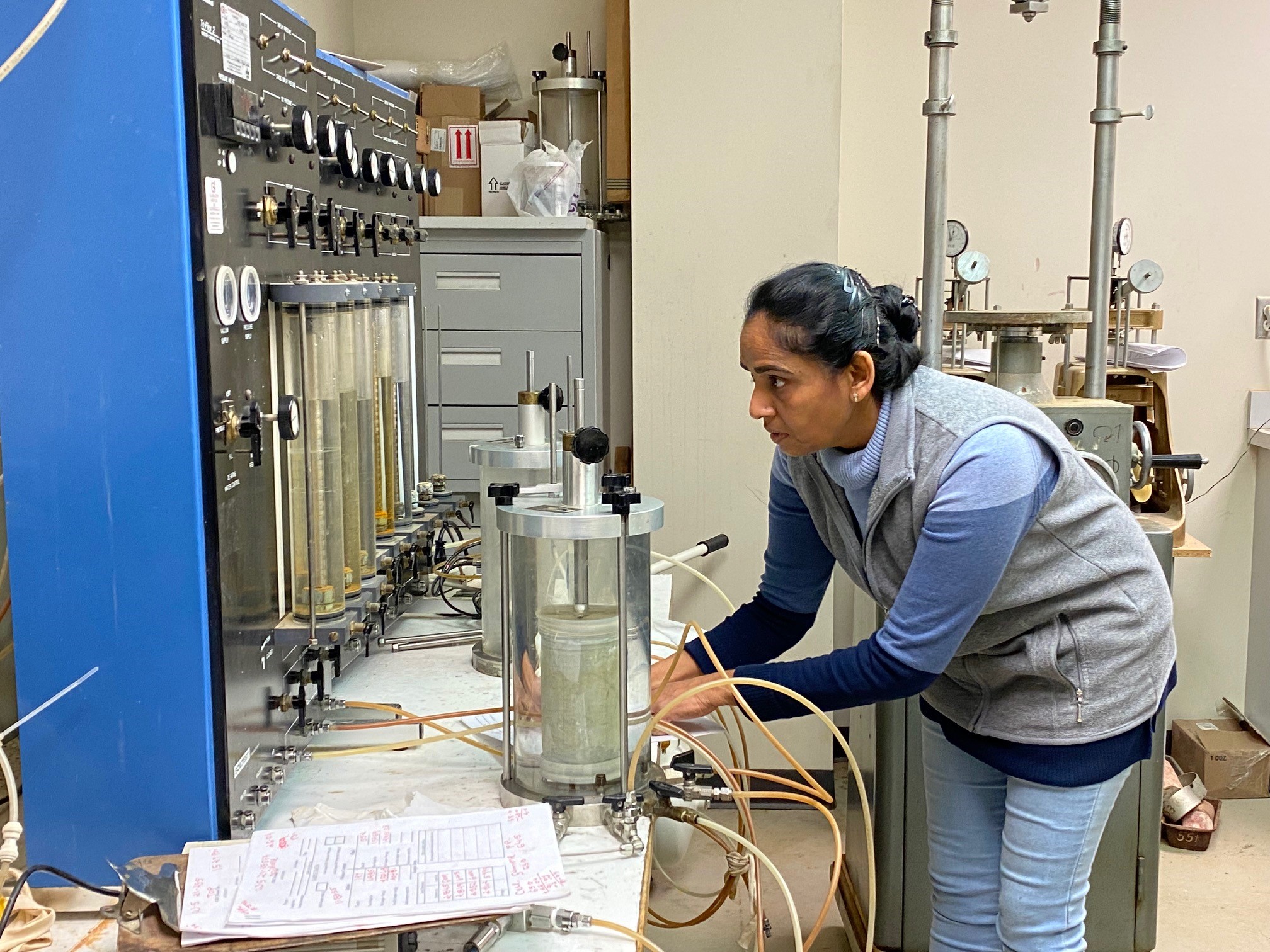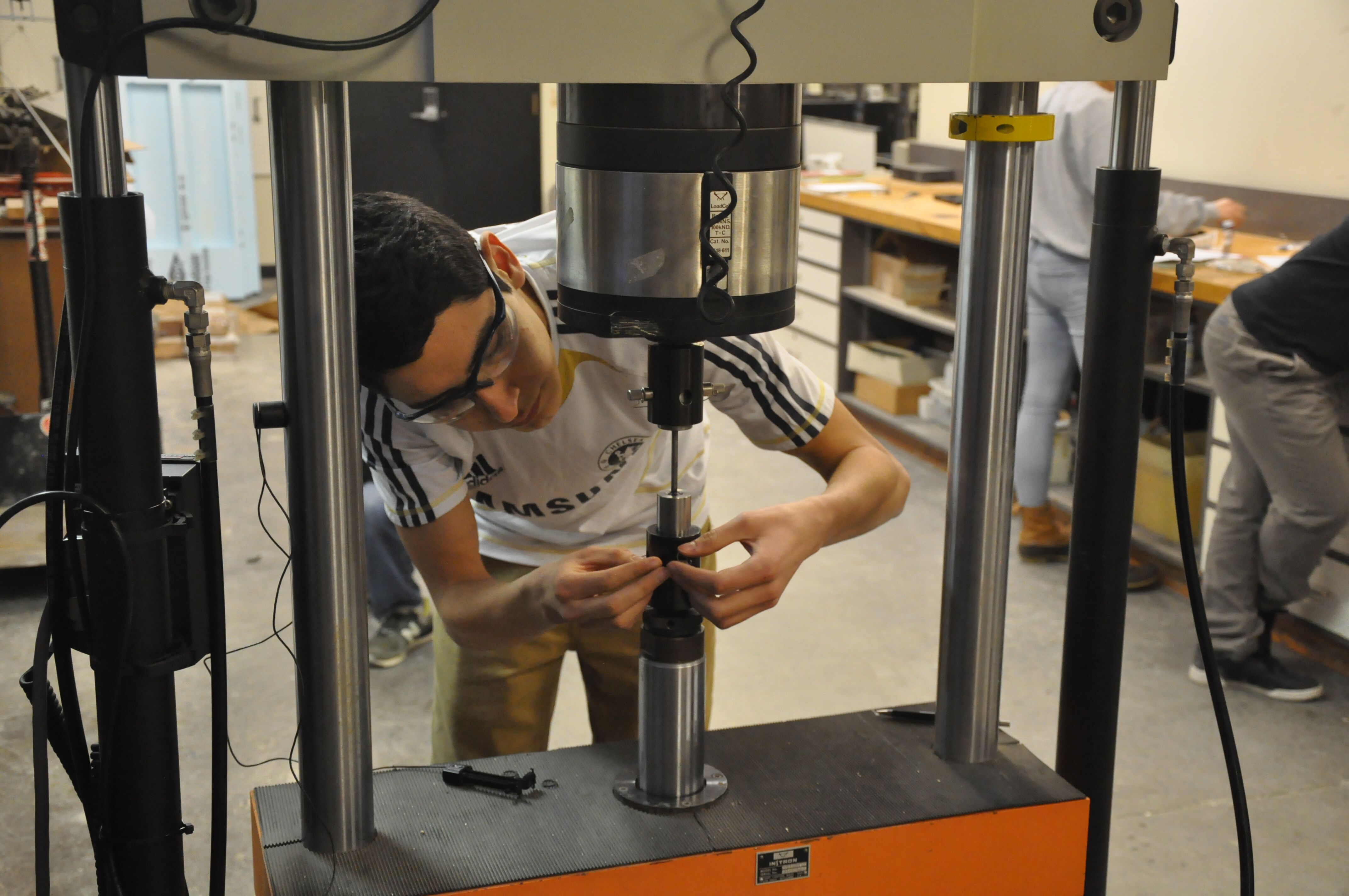Materials Test Lab Proficiency: Unraveling Top Quality via Specialist Evaluation
Wiki Article
Pushing Limits: Checking Out Methods in Materials Testing
Welcome to 'Pressing Limits: Checking Out Methods in Materials Evaluating'. In this seminar, we will explore the innovative and advanced methods made use of in the area of products testing. As technology advancements, so does our ability to press the borders of what is possible in testing and analyzing numerous products. From sophisticated imaging technologies to high-throughput testing strategies, we will certainly explore the most up to date strategies that enable us to acquire a deeper understanding of product buildings and habits. Through non-destructive screening methods and novel multi-scale evaluation methods, we can reveal useful insights that can change markets such as aerospace, manufacturing, and building and construction. Join us as we start a journey of exploration and exploration in the world of materials testing.Advanced Imaging Technologies
Advanced imaging innovations have actually revolutionized the field of materials testing, allowing researchers to dig deeper right into the architectural homes of products. These sophisticated strategies have opened up new avenues for examining and examining products, supplying beneficial understandings that were formerly unattainable.One such innovative imaging technology is X-ray calculated tomography (CT), which uses X-ray beams to create 3D pictures of the internal framework of products. By recording numerous X-ray photos from various angles and reconstructing them, researchers can imagine the internal features and defects of products with exceptional detail. This non-destructive strategy is especially beneficial for taking a look at complex frameworks, such as composite products or elements with intricate geometries.

Additionally, atomic force microscopy (AFM) has actually arised as an useful tool for characterizing the surface area buildings of materials at the nanoscale. By scanning a sharp probe throughout the material's surface, AFM can gauge forces and create thorough topographic maps, supplying important info regarding surface roughness, mechanical residential or commercial properties, and attachment forces.
Cutting-Edge Simulation Methods
An array of cutting edge simulation approaches are pressing the boundaries of products screening, using researchers unmatched insights right into product habits. These cutting-edge simulation techniques employ sophisticated computational techniques to design and forecast the performance of products under various conditions. By imitating the habits of products at the atomic and molecular level, scientists can better comprehend the hidden mechanisms that regulate product residential properties and efficiency.Another effective strategy is limited aspect evaluation (FEA), which splits a complicated structure or material right into smaller sized, extra convenient aspects and evaluates their habits under various loads. FEA is extensively made use of in design and materials science to research the action of materials to mechanical, thermal, and electromagnetic pressures.
In addition, multiscale modeling integrates different simulation methods to link the void in between macroscopic and atomistic scales. By incorporating info from different length ranges, researchers can precisely anticipate the behavior of products under real-world conditions.
These advanced simulation methods are changing materials screening by supplying insights that are or else tough or impossible to acquire experimentally. They enable researchers to optimize material layout, check out brand-new materials, and boost the performance and integrity of existing materials in a vast array of industries, from aerospace to biomedical.
Non-Destructive Examining Methods

- Countless non-destructive screening techniques are used in materials examining to take a look at the residential properties and integrity of products without causing damage. These methods play an essential duty in various sectors, including aerospace, auto, building, and production, where the quality and integrity of materials are vital.
One commonly utilized non-destructive screening technique is check that ultrasonic screening. This approach involves sending out high-frequency acoustic waves through a product and analyzing the echoes that jump back. By gauging the time it takes for the mirrors to return, specialists can determine the density of the material, find internal problems, and analyze the overall structural stability.
An additional widely used method is radiographic screening, which makes use of X-rays or gamma rays to inspect materials. This technique is especially reliable for detecting internal problems such as splits, incorporations, or gaps. By exposing the material to radiation and recording the resulting photo on a movie or electronic detector, professionals can review the top quality and sturdiness of the product.
Other non-destructive screening methods consist of magnetic bit screening, dye penetrant screening, and eddy existing screening. Each strategy has its own unique advantages and appropriates for certain material types and applications.
High-throughput Testing Approaches
High-throughput screening strategies provide a reliable and comprehensive ways of evaluating materials in huge quantities during the screening process. This technique includes the synchronised screening of various samples, allowing for the rapid identification of materials with preferred attributes or residential or commercial properties.Among the vital advantages of high-throughput screening techniques is the capacity to test a wide variety of products in a brief time period. Traditional testing techniques commonly call for labor-intensive and time-consuming processes, making it challenging to assess big numbers of samples. With high-throughput testing, scientists can swiftly examine products on a range that was formerly not possible.
One more benefit of high-throughput screening is its ability to identify products with certain properties or characteristics. By testing a a great deal of samples, scientists can determine products that display specific properties, such as high toughness or outstanding conductivity. This makes it possible for researchers to customize products for particular applications or sectors.
High-throughput screening methods additionally permit the discovery of new materials with one-of-a-kind properties. By evaluating big amounts of products, researchers can uncover products that show unique features or behaviors. This can lead to the development of brand-new products that have a large range of applications, from innovative electronics to power storage.
Unique Multi-scale Evaluation Approaches
The execution of unique multi-scale analysis methods boosts the accuracy and accuracy of products examining procedures. By integrating multiple ranges of evaluation, researchers have the ability to obtain an extra thorough understanding of the behavior and residential or commercial properties of materials. Typical materials testing methods often concentrate on macroscopic properties, but these techniques fail to record the detailed information and interactions that occur at smaller sized scales.One instance of a novel multi-scale evaluation technique is using computational modeling. By imitating the habits of products at different ranges, researchers can forecast and comprehend their mechanical, thermal, and chemical residential or commercial properties. This enables more exact predictions and optimizations of look at this web-site product efficiency.
One more approach entails making use of innovative imaging techniques, such as electron microscopy and atomic pressure microscopy - materials test lab. These techniques allow scientists to visualize and examine materials at the nanoscale, supplying understandings into their microstructure and structure. By incorporating these observations with macroscopic screening information, a more total image of the material's habits can be gotten
Furthermore, the combination of artificial intelligence algorithms and information analytics in products testing has likewise enhanced the precision of evaluation. These methods can determine patterns and relationships in huge datasets, permitting faster and much more effective evaluation of products residential or commercial properties.
Final Thought
In verdict, the expedition of strategies in materials testing has resulted in considerable improvements in numerous locations. Advanced imaging modern technologies have actually permitted for detailed analysis and visualization of product frameworks. Cutting-edge simulation methods have facilitated the prediction and understanding of material behavior. Non-destructive screening techniques have actually made it possible for the examination of material integrity without triggering damage. High-throughput testing strategies have actually accelerated the discovery of new materials. Lastly, novel multi-scale evaluation approaches have actually supplied insights into product properties at various ranges. These advancements have actually pushed the boundaries of products testing and paved the means for additional research and innovation.
A range of modern simulation techniques are pressing the boundaries of products testing, using researchers unmatched understandings into product behavior (materials test lab). By replicating the behavior of materials at the atomic and molecular degree, scientists can better recognize the underlying systems that control material residential properties and performance
Various non-destructive screening techniques are utilized in products testing to analyze the properties and integrity of materials without creating here are the findings damages. By exposing the material to radiation and catching the resulting photo on a film or digital detector, service technicians can review the quality and stability of the product.
By examining large quantities of materials, researchers can uncover materials that display unique attributes or actions.
Report this wiki page